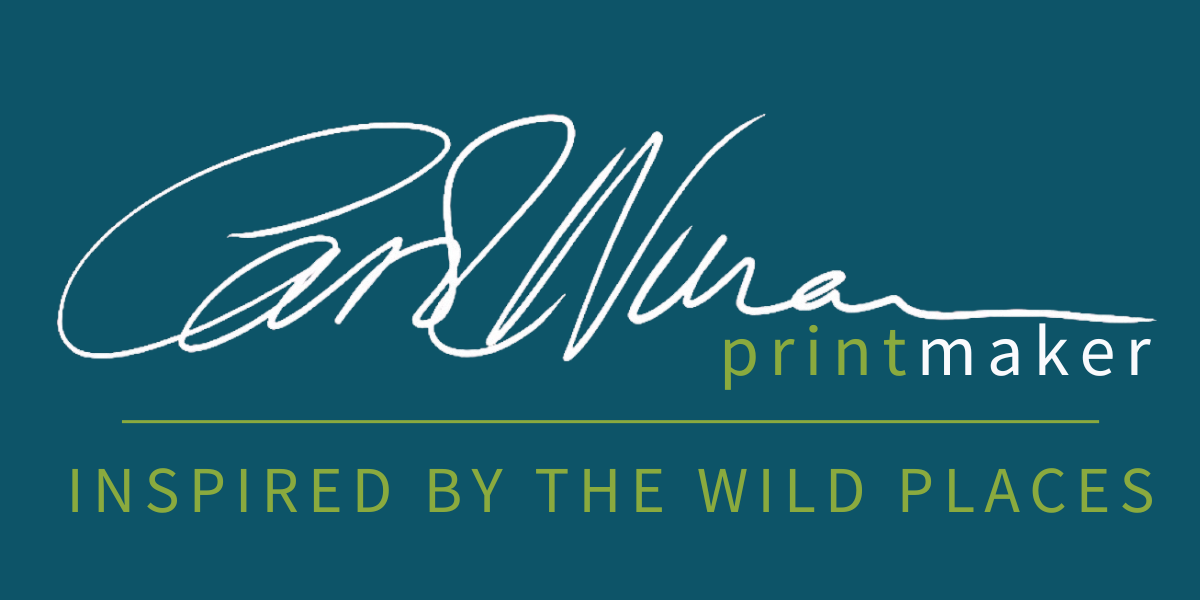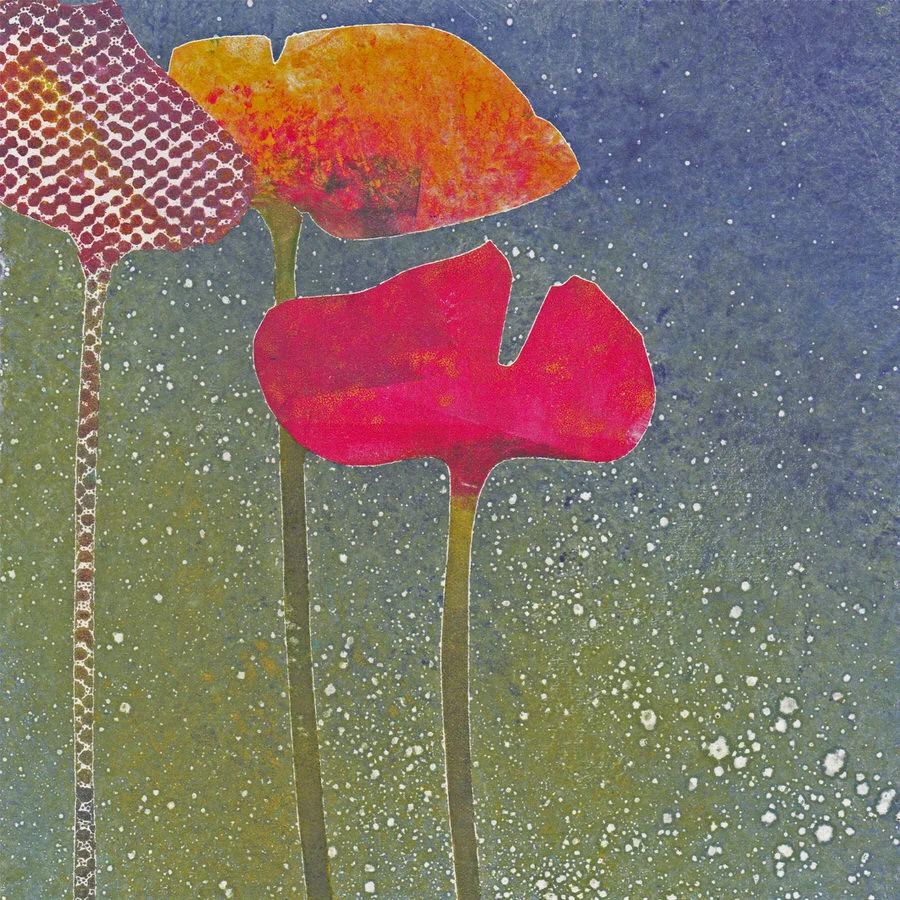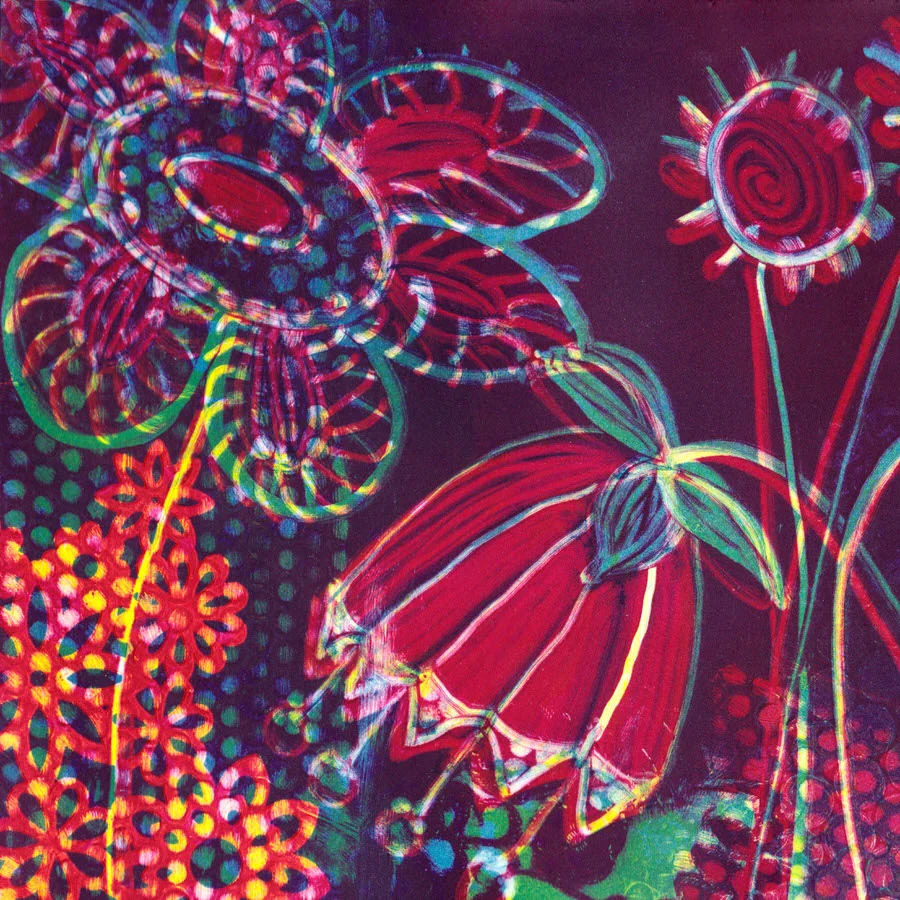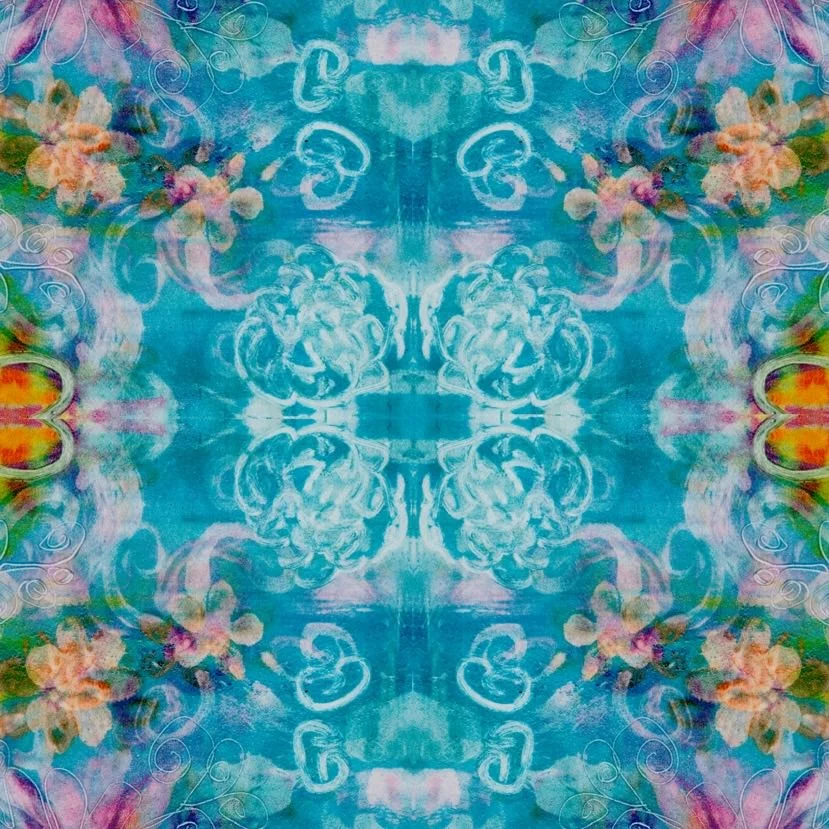What is a monotype? A Beginner's Explanation To Understanding This Printmaking Media
At its simplest a monotype is a hand printed ‘painting’. It is a print made, by hand, by ‘painting’ inks onto a smooth surface. Once the image is complete, a damp sheet of paper is placed on top and the plate and paper is passed though an etching press under pressure to transfer the ink to the paper. Just as any painting, the print is unique. It cannot be reproduced by hand as there is no permanent matrix left on the plate.
My Monotype Methodology
I begin with a large sheet of Perspex. I ‘paint’ oil based inks by rolling out ink, or painting with a brush, or pieces of card and/or placing inked textured materials onto the smooth surface of the plate. Occasionally I create masks with either acetate, paper or natural organic materials.
The inks I use, Hawthorn Inks, have a translucency that create a quality of light and tone difficult to achieve in a painting. My very first floral prints, began with creating a ‘painting’ onto perspex . I inked up the background and placed floral shapes made from acetate and textured wall paper, that were inked up separately, on top of the background which I printed by passing the plate and paper through the etching press in one pass.
Developments
As I developed the technique, I began to print in layers wiping away ink and adding more ink selectively to create more interest and depth. One day driving back home from the studio, I had a Eureka moment as I pondered how to get more detailed floral and plant shapes into my prints.
Why not, I thought, incorporate real plants instead of acetate shapes. I soon discovered by doing this and flipping the plants over, the underside would have picked up the inks from the first pass through the press. On the second pass, all the delicate tracery of detail printed beautifully.
You can work reductively, meaning that once the ink has been applied to the plate some of it is wiped away using cloths, cotton buds, sticks, dry brushes and pieces card. Alternatively, one can work additively, where the ink is applied to the plate selectively with any of the aforementioned tools. Or the two techniques can be used together. You can also creatively work with inks of different viscosities to get lovely results.
Where I am now in my work
Over many years of teaching myself these different techniques, picking up hints and tips from other printmakers along the way, I’ve now begun to combine monotype with my collagraph prints using multiple plates. I will print one or more layers from a monotype plate and then print a collagraph plate on top so that I can bring together the effects from both media into the one print. The beauty of printmaking for me is that the learning never stops. There are always new things to try out and with which to experiment.



